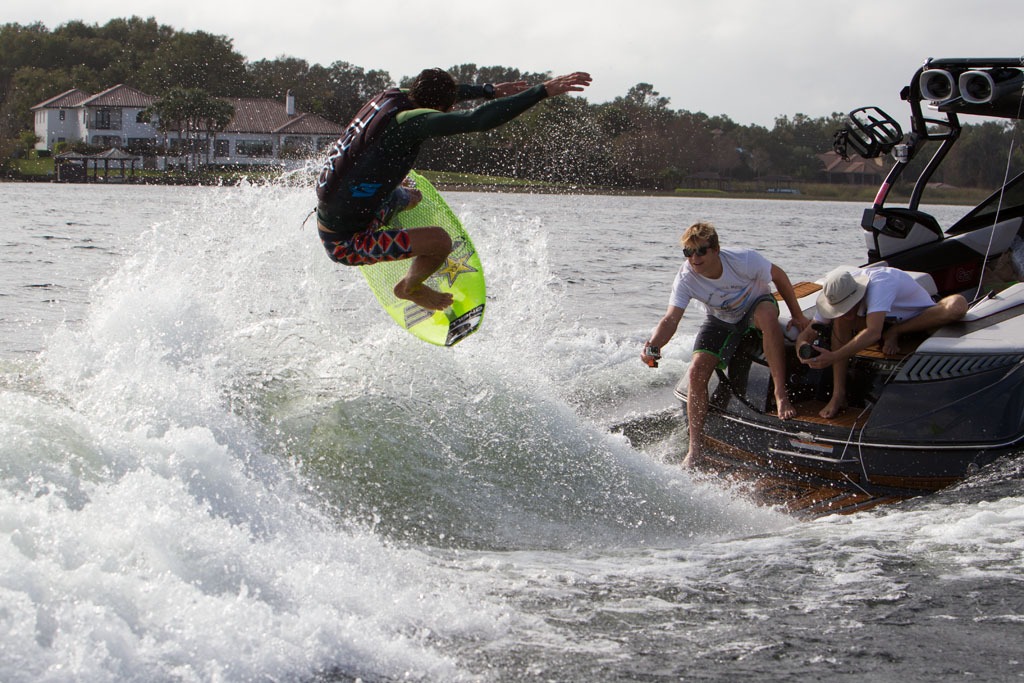Getting a Jump on Spring Wakesurfing
Garrett Durham March 12th, 2020 Posted In: Articles
Getting a Jump on Spring Wakesurfing
At the end of last season, you had your boat winterized and stored your gear to keep it all safe and out of the way throughout winter. Since then, while your gear collects dust, I’m sure you’ve been dreaming of the day you’re able to get out on the lake again, to feel the warmth of the sun and the spray of the wake. Great news! Spring is quickly approaching and, for water sport enthusiasts, it’s almost time to pull the boat out of storage and start preparing for the spring wakesurfing season. Chances are, though, you have a little work to do before you can effortlessly get on the water.
 Owning a boat allows you the freedom to hit the open sea whenever you want, bringing along friends and family and taking turns wakesurfing. Owning a boat also comes with the extra responsibility of keeping everything in working order and having the equipment ready, and in good shape, to maximize your day on the water. We’re going to go over how to prepare for the wakesurfing season so there aren’t any surprises when spring comes.
Owning a boat allows you the freedom to hit the open sea whenever you want, bringing along friends and family and taking turns wakesurfing. Owning a boat also comes with the extra responsibility of keeping everything in working order and having the equipment ready, and in good shape, to maximize your day on the water. We’re going to go over how to prepare for the wakesurfing season so there aren’t any surprises when spring comes.
Preparing the Boat
After sitting for a few months, your boat is going to need a little love to get it ready for the water. The first step, when the time comes, is to have your boat de-winterized. Check all of the following:
- Oil and fluid levels and fill anything that’s low. If the engine oil wasn’t changed before winter, change the oil and filter.
- All lines and hoses to the engine for wear and replace any that need to be replaced.
- The belts to make sure they are all tight.
- The distributor, carburetor, and spark plugs to make sure they are tight and in good working order.
- Make sure the battery is charged.
After making sure everything is in good shape, either put the boat in the water or attach water to the drive and start the engine. Going over the boat in this way before taking your first trip will help you identify any potential issues before you’re on the water.
Assembling the Gear
Before taking the first trip for the season, it’s a good idea to inspect all your gear to make sure everything is still in good shape. Start with the board check for cracks or unusual wear. Also, make sure to check the fins to make sure they aren’t cracked or bent. Inspect the rope for dry rot – the last thing you want is to snap a rope when pulling someone up. Then check the handle for unusual wear. If the rope is rotted, or there is an issue with the handle, it’s time to replace it. Last, inspect, clean, and dry all your life jackets. If there are tears in the fabric, it’s a good idea to get a new one.
Getting a jump on wakesurfing by starting in the spring, there’s a good chance the water will still be cold. If that’s the case where you are, wearing a wakesurfing wetsuit will help keep you warm and comfortable. Depending on how cold the water is, you might want a thicker wetsuit. Check out this guide with recommended wetsuit thickness and recommended wetsuit type for various water temps.
Setting Up The Boat
To have the best time, and the greatest chance of success, when wakesurfing, you want your boat to produce a big wake while going about 10 mph. When wakesurfing became popular, towboat manufacturers started incorporating big wake technology into their boats. A lot of the boats on the market have integrated ballast systems that allow you to put a lot of weight in the back of the boat to increase the size of the wake and surf gates that help you shape the wake to be optimal for wakesurfing.
If your boat doesn’t have these features, you can use ballast bags or physical weights to add the heft you need for a great wake. Weight will help increase the overall size of the wake because more water is being displaced by the hull. The next step in getting the perfect wake is using a wake shaper to improve the shape of the wake. There are portable wake shapers that attach to the stern using either Velcro or suction cups.
Final Thoughts
With spring wakesurfing season just around the corner, it’s time to start thinking through and taking the steps to prepare. Inspecting gear, setting up your boat for a big wake, and getting your boat in tip-top operating condition will help your spring wakesurfing go as smoothly as possible. The only thing left is to get on the water.


I found it hard to swim in my new wetsuit. I couldn’t move forward??
Hi Julie! What kind of wetsuit did you purchase for swimming? For competitive or open water swimming, it’s best to get in a triathlon wetsuit that features a smooth skin exterior to help you “glide” in the water and move forward. A standard neoprene wetsuit, especially if it lacks stretch, might not be the best choice. If you need any more help to find a better option, you can also reach out to our awesome customer service team either via email (service@wetsuitwearhouse.com) or call +1 866-906-7848. Hope this helps!